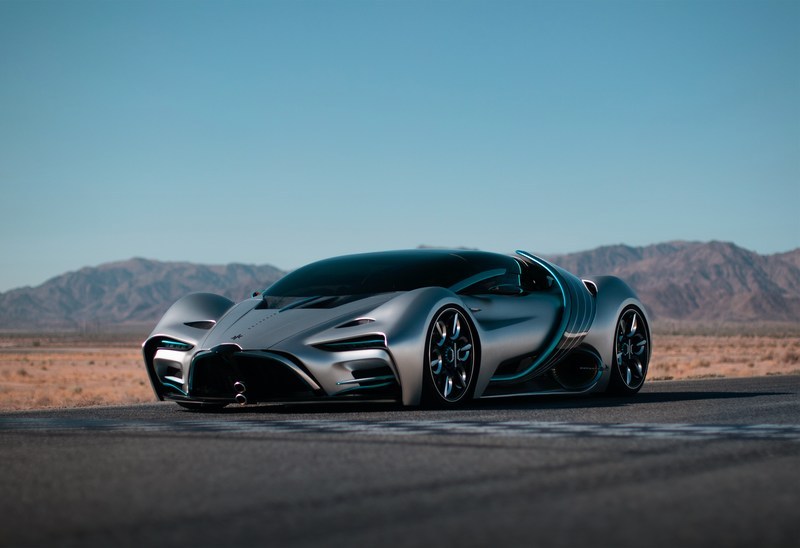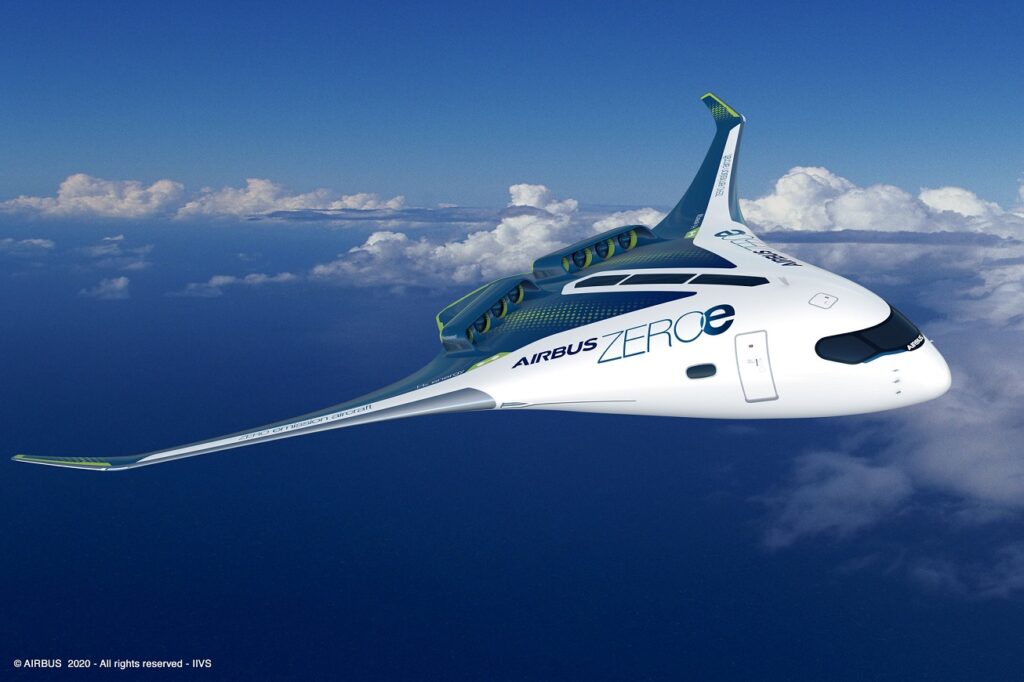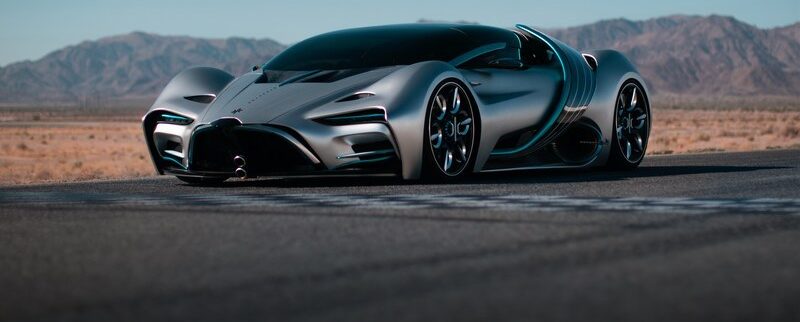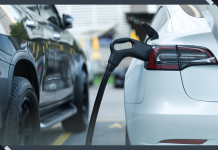Written by: Geoffrey Holland
In September 2020, Barron’s reported on a Goldman-Sachs study that says, ‘Green Hydrogen’ will become a $12 trillion market.
Futurist Tony Seba and his ReThink team at Stanford University believe that most of the world can make the transition to 100 percent clean, renewable energy by the end of this decade. That’s a remarkable claim, but where there is a way – and there is a way – maybe humanity can muster up the will as well.
As for the will, a survey released just before the November election by the Yale University Climate Nexus Program found that 82 percent of voters either somewhat (33 percent), or strongly agree (49 percent) that the ‘primary goal of US energy policy should be achieving a 100 percent clean energy economy’.
“The imminent collapse of the fossil fuel industrial civilization could occur sometime between 2023 and 2030.”– Jeremy Rifkin, Foundation on Economic Trends
We have the technology. The human civilization on Planet Earth is already on a path to the clean energy promised land.
What Powers Life?
What is the fuel that makes plants and animals alive, and allows them to survive and thrive? The answer is the simplest, most abundant substance in the universe; the first element on the chemical periodic chart, hydrogen. About 88 percent of all atoms that exist are hydrogen atoms. The stars are powered by hydrogen. Our sun is powered by hydrogen, and other elements that started out in the cosmic crucible as hydrogen.
Many of the most complex chemical processes associated with life are now known. Hydrogen ions are the common denominator in all of them.
Life does not exist without hydrogen. It is the ultimate fuel for the biosphere we all depend on.
In this early part of the 21st century, more and more, we are embracing nature’s model, and learning how hydrogen can serve the burgeoning energy needs of human society in a way that is life-affirming and sustainable.
‘The more our world functions like the natural world, the more likely we are to endure on this home that is ours, but not ours alone.” – Janine Benyus, Co-Founder, Biomimicry 3.8
Where the Wind Blows
The Orkneys are an island group ten miles off the north coast of Scotland: population, 22,000. The Orkneys are windy nearly all the time, and it rains very often there as well. It is also a place where new technologies are in place to harvest tidal energy from ocean waves.
Between the wind and the waves, there is much more than enough clean, renewable energy to meet all of Orkney’s needs. In fact, up until recently, there has been so much excess capacity that the wind turbines and tidal energy machines had to be shut down for part of every day, because there was no outlet for the surplus.

Then, in 2017, the European Marine Energy Centre (EMEC) installed a system on Orkney that employs electrolysis to split water molecules to capture and store hydrogen for use on demand. The success of that project led to an expansion of capacity through a collaboration between EMEC and Community Energy Scotland. Orkney’s hydrogen is already being used to power some vehicles, and the plan is for it to be used to heat a primary school. A passenger ferry equipped with fuel cells powered by hydrogen is also in the works.
Hydrogen is nature’s choice as a clean, storable, for use on-demand energy carrier, and now we see it working very well, serving in the same capacity in Orkney.
Wherever there is a lot of wind, sun, hydro, geothermal, or some other renewal energy resource, converting surplus electricity into an energy currency that is storable and available for use on demand is money in the bank. What is happening with hydrogen in Orkney can be adapted pretty much to any location on Earth, from desert to deep sea.
Hydrogen is flammable and can be burned to produce heat. In an internal combustion or gas turbine engine, hydrogen can be converted to mechanical power or electricity.
There is another technology first used a half century ago in the space program, that runs on pollution-free hydrogen. It’s called a fuel cell. It produces electricity very efficiently by freeing electrons from hydrogen atoms.
Whether you burn hydrogen, or use it to power a fuel cell, the only exhaust is water vapor. Hydrogen truly is nature’s brand of clean energy. And, if that isn’t good news enough, green energy sources like wind and solar are also clean and renewable. Bottom line: our Earth will never run out of clean energy or hydrogen.
Dirty hydro-carbon fuels like gasoline flood our atmosphere with heat-trapping pollution. With hydrogen, whether burned in a combustion engine or converted to electricity in a fuel cell, the only exhaust is pollution-free steam.

“Fire made us human, fossil fuels made us modern, but now we need a new fire that makes us safe, secure, healthy, and durable.” – Amory Lovins, Rocky Mountain Institute
Autos, Trains, Planes, and Ships
The Hyperion Motors group has developed a remarkable fuel cell powered supercar that goes 0-60 mph in 2.2 seconds, has a top speed of 220 mph, and a range of 1,000 mile between fill-ups.
The technologies in the hydrogen fueled Hyperion XP-1 are sleek, sophisticated, and state-of-the-art, but they are not new. Most of the world’s automakers have been developing hydrogen fuel cell powertrains for at least two decades. The Toyota Murai, and the Honda Clarion are fuel cell powered cars that have already achieved limited assembly-line production.

Credit: PRNewsfoto/Hyperion
The future market for fuel-cell cars remains promising, but unsettled, in the US at least, because there is very little hydrogen fueling infrastructure to support them. That’s not the only challenge. Battery powered, electric cars (EV) like those built by Tesla are soaking up the market for pollution-free auto transport for two reasons. First, they are produced on a mass scale sufficient to make them cost-effective. That is due in part to Federal and state government policy that has included significant financial incentives to buy EVs. Second, the nation-wide infrastructure for EV re-charging is already established, and is rapidly expanding.
Large, over-the-road tractor trucks are not subject to the same forces that shape the auto market. A new company called Nikola Motors will soon be manufacturing commercial trucks powered by hydrogen fuel cells. Performance specs are impressive: up to 1,000 horsepower, 500-750 miles range, hydrogen fuel fill-ups in 10-15 minutes. Nikola’s plant, currently under construction in Arizona, is scheduled to begin vehicle production late in 2021.
Toyota and Hino are also players in the emerging fuel cell truck market, as are Hyundai and Mercedes.
At this point, the primary competition for fuel cell tractor trucks is coming from Tesla, whose battery-powered Semi is expected to go into production in 2021.
With fuel cell powered trucks employed in fleet operations, limited fueling infrastructure is not an issue. The hydrogen fuel requirements can be met by a small number of fueling points positioned to support ongoing operations.
It appears that fuel cell powered trucks and the Tesla battery-powered semi could all find acceptance and success in the world’s clean energy truck competition.
Nikola Motors also has a new fuel cell pick-up truck design that will be manufactured in partnership with General Motors starting late in 2022.
Hydrogen fuel cells are also a good fit for the world’s railroads. In Germany, there are now 41 commuter trains driven by fuel cells powered by hydrogen. Built by Alstrom, they are also now running on the rails in Austria.
Large freight locomotives powered by hydrogen fuel cells are in development. Imagine the sooty pollution generated by five diesel-electric locomotives hauling a hundred rail cars from California to the East Coast. Then visualize the same freight train powered by hydrogen fuel cells, leaving nothing but water vapor in its wake.
Aircraft can be powered by hydrogen, but they are currently range-limited because of hydrogen’s low-ambient power density as a lighter-than-air gas. Despite the technical challenges, Boeing and Airbus are both developing aircraft designs, like the blended-wing-body (BWB), that are well suited to turbine engines designed to run on hydrogen, or fuel cells that power electric fan engines. In both cases, the hydrogen would be chilled to a super-cold form called ‘slush hydrogen’ to deliver the flight range requirements for commercial service. BWB passenger aircraft are probably a decade or two away from regularly scheduled passenger service. Guillaume Faury, CEO of Airbus Industries, has said, “Together with the support from government and industrial partners, we can rise up to this challenge to scale-up renewable energy and hydrogen for the sustainable future of the aviation industry.”

Credit: Airbus
There is another kind of aircraft that could be flying with hydrogen fuel cell power much sooner. Alaka’i Technologies is just one aviation start-up that is developing an EVTOL (Electric Vertical Take-Off and Landing) aircraft. The company expects to have their design, called Skai ready for production as early as 2021. Powered by a hydrogen fuel cell, Skai will carry four passengers up to 400 miles, and will be capable of remaining airborne for up to four hours. It is designed to be operated by a pilot on board, by remote-control, or autonomously. Alaka’i has set a very ambitious timeline for launching Skai. It hopes to have FAA approval by the end of 2020 and be in production shortly after that. Perhaps most surprising, Alaka’i is projecting a price tag of only about $200,000 per Skai EVTOL aircraft.
Hydrogen is also expected to have broad application on the world’s waterways. The German Navy has been operating fuel cell powered submarines for over a decade.
As a percentage of annual total emissions from human sources, ships at sea are responsible for 2.2 percent of CO2 pollution, 15 percent of NOx, and 13 percent of SOx. The maritime industry is under pressure to reduce its global pollution footprint. There are already a number of small vessels operating with fuel cells powered by hydrogen. A fuel cell powered passenger ferry, is expected to enter service in the San Francisco Bay Area early in 2021.
Hydrogen powered fuel cells could be an even better fit for propulsion of large, sea-going merchant ships. ABB Marine & Ports, a supplier to the world maritime marketplace, is collaborating with Hydrogene de France and Ballard Power Systems to develop megawatt-scale fuel cells designed for powering bulk carriers and container ships. ABB Managing partner Juno Koskela has said, “With the ever-increasing demand for solutions that enable sustainable, responsible shipping, we are confident that fuel cells will play an important role in helping the marine industry meet CO2 reductions targets.”
The Uneven Landscape for Hydrogen
With assertive energy policy and substantial public funding, China, Japan, South Korea, and the European Union have all adopted ambitious plans for integrating hydrogen in their energy roadmaps.
China already accounts for a third of the world’s annual hydrogen production, the largest share by far. China’s installed capacity of fuel cells grew six times just in the first seven months of 2019. The 2020 Made in China policy strategy shifted significant funding from battery electric cars to fuel cell vehicles, to expand a hydrogen fueling infrastructure and to achieve mass production of fuel cell electric vehicles by 2020.
In Asia, Japan and South Korea are also betting big on Hydrogen. The commitment of government and industry in Japan is reflected by the 265,000 residential fuel cells that were in operation as of 2018. The government intends of have 5.3 million residential fuel cells in place by 2040.
Before the COVID pandemic derailed the 2020 Tokyo Olympics, Japan had planned to use the two-week long event to showcase renewably produced hydrogen as a core part of that nation’s clean, green energy model going forward. Toyota and Honda have bet big on fuel cell powered cars, and the government has supported a public hydrogen dispensing infrastructure throughout the country.
A spokesperson from the Japanese Ministry of Economy, Trade and Industry has said, “Japan will present hydrogen to the rest of the world as a new energy choice and will lead global efforts for establishing a carbon-free society taking advantage of Japan’s strong points.”
South Korea’s ambitious vision for green hydrogen includes the construction of three new ‘Hydrogen-powered’ cities by 2022. These cities will use hydrogen for cooling, heating, electricity, and transportation. The government is subsidizing the production of fuel cell vehicles, and the installing of much new hydrogen fueling infrastructure over the next three years.
In Europe, the goal is to expand green hydrogen production six times by 2024 as part of its post-COVID, $750 billion economic rescue plan.
Frans Timmerman, Executive Vice President of the European Union’s executive arm, has said, “What you need for hydrogen to be a successful energy source and storage facility in the future: you need the production to be within the price range, you need transport and storage facilities and you need the market. With our strategy we want to stimulate all three.”
In contrast to the emergence of hydrogen as an important part of the energy mix in Asia and Europe, the momentum in the US has mostly stalled for more than a decade. That can be traced directly to US government energy policy, which has long been and continues to be shaped by and for the fossil fuel industry.
Enough with the Mis-Information
Because it is a pollution-free threat to the dirty energy status-quo, hydrogen has its detractors. More than a little of the criticism and dismissal comes from the fossil fuel industry. Some battery proponents, who compete for R&D money with hydrogen, have also been part of the assault.
The efforts to undermine generally revolve around safety, efficiency, and cost.
Some critics say hydrogen is too dangerous. There’s no denying, hydrogen is flammable; but, so are natural gas, and propane, and every other kind of dirty, fossil form of energy. The safety issue is a bit of a red herring. Industry has been handling hydrogen safely for many decades.
A number of hydrogen’s properties make it safer to handle and use than the fuels commonly used today. For example, hydrogen is non-toxic. In addition, because hydrogen is much lighter than air, it dissipates rapidly when it is released, allowing for relatively rapid dispersal of the fuel in case of a leak. – US Department of Energy
Battery proponents complain that it is inefficient to use perfectly good electricity to make hydrogen, when it can be stored in batteries. That might be true if batteries were free. But there is a cost to processing lithium and other raw materials into batteries, and there are limits imposed by weight and power-density with batteries.
In fact, storing green electricity as hydrogen appears to stand up very well when compared to the economics and the limitations of batteries.
What does it cost via electrolysis to produce a kilogram of green hydrogen, which is equivalent in energy to about a gallon of gasoline? It starts with water. For a kilogram of hydrogen, it takes about three gallons of H2O. Let’s assume a cost of one cent for the water. Let’s assume the amortized cost of the electrolysis hardware assigned to each kilogram of hydrogen produced to be five cents. Let’s assume it takes 51 kilowatts of electricity at a cost of three cents each to produce one kilogram of hydrogen. Let’s not quibble about the cost of electricity. Off-peak power can widely be had for three cents/kWh, or less. At three cents/kW, the cost is about $1.59 per kilogram of hydrogen. To do a direct comparison to a gallon of gasoline, let’s just assume a government tax that puts the cost of the hydrogen at three dollars for the energy equivalent of a gallon of gasoline. I just tanked up my car this morning. It cost $2.93 per gallon of gasoline. So, what do we see here – $3.00 for hydrogen equivalent to $2.93 for a gallon of gasoline. Under these assumptions, the direct cost would be nearly the same.
That’s not the whole story. We have to look at the efficiency where the rubber meets the road. A fuel cell car is about 64 percent efficient, while a car that burns gasoline is about 20 percent efficient. Let’s translate those percentages into miles per gallon. For the same amount of energy, a hydrogen car will take you 64 miles versus 20 miles for a gasoline car. Hydrogen power is about three times more efficient.
With dirty fossil energy, there are externalized costs that get left out of the equation. The economics we know assumes these costs do not exist; but they do exist, and they should be accounted for. Consider what our dependence on dirty hydro-carbon fuels amounts to when the directly attributable costs are included. We’re talking about massive amounts of air pollution, massively disruptive climate change, and the directly linked health and economic costs. Count it in the trillions: trillions of dollars, that’s the hidden cost – the cost that old school economics externalizes and ignores. That’s the real cost of our dependence on dirty fossil forms of energy.
As the global human culture embraces nature’s choice of hydrogen as a primary energy commodity, the huge externalized costs of our dependence on polluting fuels will begin to dissipate.
Hydrogen is non-toxic. It’s pollution-free. It’s renewable. It’s inexhaustible. It’s nature’s way. In concert with electricity, hydrogen is humanity’s way forward to a life-affirming, sustainable place in the cosmos.
The technologies required to build a renewable hydrogen economy are here. Solar panels and wind turbines have already achieved economies of scale from volume manufacture. Between 2009 and 2017, the cost of solar PV and wind turbines dropped 76 percent and 34 percent respectively. They are already the cheapest sources of new build power generation for two-thirds of the global population.
The cost of electrolysis is falling sharply as well.
“The price of electrolysers went from between €2 and €4 million per MW a couple of years ago, to around half a million now. This means the main driver for the cost of hydrogen produced by electricity is now electricity itself, which represents three quarters of the cost of production. As green electricity gets cheaper every day, low cost green hydrogen is coming. In parallel, as with solar and wind, the cost of hydrogen production is falling exponentially, as system sizes and production volumes grow, while performance improves.” – Rafael Schoentgen, World Economic Forum
Bloomberg has reported that green hydrogen could go as low as $1.33/kg. by 2030, and $0.76/kg. by 2050.
China, Japan, South Korea, and the European Union are putting big money and assertive public policy to work to facilitate a world that runs on green electricity and hydrogen. In recent years, the US has largely been on the sidelines. That is likely to change under the clean energy policy that emerges with the incoming Biden Administration.
“The first rule of sustainability is to align with natural forces, or at least not try to defy them.” – Paul Hawken, Natural Capitalist
The Green New Deal and Hydrogen
The entire world of nations continues to struggle with the ongoing COVID pandemic. We are also getting slammed by unprecedented heat and weather extremes, caused by our addiction to dirty energy.
In the US, the economy is hobbled. Tens of millions of Americans are out of work. Restoring our environment, restoring our economy starts with jobs. The Green New Deal is a jobs program; a full employment initiative that will decarbonize our energy system, and move the world toward a clean, renewable solar hydrogen economy.
More than anything, people need to be motivated by tangible visions of humanity doing the right thing; restoring our biosphere; learning to live in harmony with nature.
The Green New Deal is not a catalogue of detailed policy to be codified as law. It functions more as a manifesto, a guideline designed to encourage change on a planetary scale. The best thing about the Green New Deal is its excellent fit as a rallying point for voters, who recognize it is time to turn away from our destructive ways. Taking a page from nature by embracing hydrogen as a common energy currency must be a part of the Green New Deal vision.
Here are the primary elements in the Green New Deal…
- Delivering 100 percent of the power demands of the United States with clean, renewable energy resources within ten years.
- Guaranteeing a job with a family-sustaining wage, adequate family and medical leave, paid vacations, and retirement security for all people of the United States.
- Providing all people of the United States with high-quality healthcare, adequate affordable housing, economic security, access to clean water, clean air, and healthy and affordable food.
- Providing resources, training, and high-quality education, including higher education to all the people of the United States.
- Repairing and Upgrading the infrastructure in the United States, eliminating pollution and greenhouse gases as much as technically feasible.
To be sure, the Green New Deal is massively ambitious. It will take a cultural commitment at least on the scale of the mobilization for World War Two to realize its potential.
“We are building an army of young people to stop climate change and create millions of good jobs in the process.” – Sunrise Movement
Detractors claim a cost figure of $93 trillion over ten years as part of their drive to discredit the Green New Deal ambition. In fact, the cost cannot be calculated without legislation that reveals how public policy would be shaped to achieve the Green New Deal promise. The final price-tag, whatever it turns out to be, cannot be a sticking point when the cost of inaction is pain, death, and destruction on a global scale.
“Even now, when the crisis is nothing short of the very survival of life on Earth, the naysayers are apt to argue that we can’t afford it, as if the issue of potential extinction is merely a line item to dispose of among the many other weighty government priorities…” Jeremy Rifkin, Foundation on Economic Trends
The Task at Hand
America needs to fully engage as a participant in the emerging age of renewable green hydrogen. An example of public policy we all would do well to support is the executive order just signed by California Governor Gavin Newsom that bans the sale of cars powered by internal combustion engines by 2035.
Green hydrogen is a big part of nature’s elegant reality. Think about what that means…limitless, pollution-free energy. It’s already here…clean, inexhaustible, inspired by nature. Choosing green renewable hydrogen is something we can all do together. We can demand it as citizens. We are interlaced as a human family as never before. We must harness that capability. We must use it to communicate with each other. We must build a planetary consensus.
It’s no secret, humans are the most clever and successful species of all time. We live consciously. We can learn. We can remember. We are aware of and are able to consider our actions and impulses. That is a gift. Time is running out. We are the apex species. We must learn to be worthy. We must give our attention to our planet.
We are not superior to and above nature. We are part of nature. We have an obligation to care for the Earth we all share. We do that by practicing good planetary citizenship. We do that now by standing together for a world powered by clean, renewably produced electricity and green hydrogen.
Geoffrey Holland is an Emmy Award-winning writer/producer, the author of The Hydrogen Age, and Coordinator of the Stanford University MAHB Dialogues.







